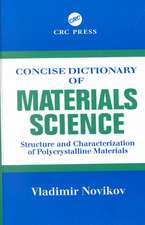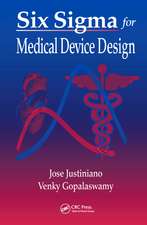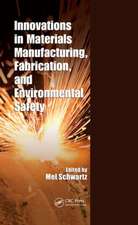Annual Plant: Sources of Fibres, Nanocellulose and Cellulosic Derivatives: Processing, Properties and Applications: Composites Science and Technology
Editat de Ramzi Khiari, Mohammed Jawaid, Mohamed Naceur Belgacemen Limba Engleză Hardback – 2 iul 2023
Din seria Composites Science and Technology
- 18%
 Preț: 1001.02 lei
Preț: 1001.02 lei - 18%
 Preț: 951.77 lei
Preț: 951.77 lei - 24%
 Preț: 885.74 lei
Preț: 885.74 lei - 18%
 Preț: 1116.26 lei
Preț: 1116.26 lei - 18%
 Preț: 1012.08 lei
Preț: 1012.08 lei - 18%
 Preț: 1006.55 lei
Preț: 1006.55 lei - 18%
 Preț: 961.23 lei
Preț: 961.23 lei - 18%
 Preț: 950.52 lei
Preț: 950.52 lei - 18%
 Preț: 1109.16 lei
Preț: 1109.16 lei - 18%
 Preț: 1109.16 lei
Preț: 1109.16 lei - 24%
 Preț: 844.95 lei
Preț: 844.95 lei - 18%
 Preț: 1112.48 lei
Preț: 1112.48 lei - 18%
 Preț: 952.89 lei
Preț: 952.89 lei - 18%
 Preț: 1383.00 lei
Preț: 1383.00 lei - 18%
 Preț: 1104.43 lei
Preț: 1104.43 lei - 18%
 Preț: 1001.65 lei
Preț: 1001.65 lei - 24%
 Preț: 946.98 lei
Preț: 946.98 lei - 18%
 Preț: 1104.08 lei
Preț: 1104.08 lei - 18%
 Preț: 1117.50 lei
Preț: 1117.50 lei - 18%
 Preț: 1386.17 lei
Preț: 1386.17 lei - 18%
 Preț: 995.34 lei
Preț: 995.34 lei - 18%
 Preț: 1113.89 lei
Preț: 1113.89 lei - 18%
 Preț: 1108.67 lei
Preț: 1108.67 lei - 18%
 Preț: 956.99 lei
Preț: 956.99 lei - 18%
 Preț: 1016.18 lei
Preț: 1016.18 lei - 18%
 Preț: 1389.78 lei
Preț: 1389.78 lei - 18%
 Preț: 1107.41 lei
Preț: 1107.41 lei - 18%
 Preț: 1002.94 lei
Preț: 1002.94 lei - 18%
 Preț: 1111.67 lei
Preț: 1111.67 lei - 18%
 Preț: 953.65 lei
Preț: 953.65 lei - 18%
 Preț: 1006.72 lei
Preț: 1006.72 lei - 18%
 Preț: 1109.62 lei
Preț: 1109.62 lei - 18%
 Preț: 1006.55 lei
Preț: 1006.55 lei -
 Preț: 386.22 lei
Preț: 386.22 lei - 24%
 Preț: 678.66 lei
Preț: 678.66 lei - 18%
 Preț: 1116.71 lei
Preț: 1116.71 lei
Preț: 1126.98 lei
Preț vechi: 1374.36 lei
-18% Nou
Puncte Express: 1690
Preț estimativ în valută:
215.65€ • 225.72$ • 179.49£
215.65€ • 225.72$ • 179.49£
Carte tipărită la comandă
Livrare economică 31 martie-14 aprilie
Preluare comenzi: 021 569.72.76
Specificații
ISBN-13: 9789819924721
ISBN-10: 9819924723
Ilustrații: XIV, 551 p. 177 illus., 121 illus. in color.
Dimensiuni: 155 x 235 mm
Greutate: 0.97 kg
Ediția:2023
Editura: Springer Nature Singapore
Colecția Springer
Seria Composites Science and Technology
Locul publicării:Singapore, Singapore
ISBN-10: 9819924723
Ilustrații: XIV, 551 p. 177 illus., 121 illus. in color.
Dimensiuni: 155 x 235 mm
Greutate: 0.97 kg
Ediția:2023
Editura: Springer Nature Singapore
Colecția Springer
Seria Composites Science and Technology
Locul publicării:Singapore, Singapore
Cuprins
Raw material: extraction and characterization of fibres and extractives products from annual plants.- Chemical composition and pulping of fibre from annual plants - A comparison with other cellulosic fibre sources.- Characterization and comparative evaluation of thermal, structural, chemical, mechanical and morphological properties.- Extraction and characterization of the antioxidant/antimicrobial performance of annual plants.- Production of bioethanol from annual plant residues: isolation and characterization.- Delignification and characterization fibres obtained from annual plant.- Annual plant as sources for preparing fibre and nanofibers.- Production of cellulose nanocrystal from date palm and their comparison with others sources.- Preparation and characterization of cellulose nanofibril from annual plant.- Thermo-chemical properties of nanocellulose from Kenaf.- Nanocellulose isolated and properties from Tunisian annual plant.- Baggage and rice straw at multiscale from fibreto nanocellulose.- Characterization of nanocellulose obtained from cactus.- Composite and nanocomposites using annual plant.- Mechanical properties of fiberboards made in biocomposites reinforced with annual plant.- Nanocomposites with cellulose nanocrystals extracted from annual plants.- Production of bio-based composites reinforced with cellulose nanofibril obtained from annual plants.- Production of cellulose nanofibrils and nanocomposites: A review of recent advances.- Nanocellulose from agricultural residues in Papermaking application.- Annual plant as a source for producing macromolecules.- Preparation and characterization of microcrystalline cellulose (MCC).- Preparation and characterization of cellulosic derivatives from annual plant.- Liquid crystalline properties of hydroxypropyl cellulose prepared from annual plant.- Structure and Properties of Cellulose and Its Derivatives from annual plant.- Production and Characteristics of Cellulose derivatives from DifferentSources.- Cellulose Chemistry: Novel Products and Synthesis Paths.- Potential of use annual plant in wastetreatment.- Potential adsorption of methylene blue from aqueous solution using annual plant residues.- The potential of annual biomass for biochar production: Performance, mechanism and wastewater application.- Biosorption and kinetic study on heavy metals removal from aqueous solution using fibre and nanocomposites from annual plants.- Valorisation of annual plants in removing synthetic dye.- Adsorption of textile dye on an unconventional biosorbent.
Notă biografică
Dr. Ramzi Khiari is a senior lecturer at the Higher Institute of Technological Studies in Ksar-Hellal (Monastir, Tunisia) in the department of Textile Engineering. He was graduated in 2005 at the National Engineering School of Monastir in the specialty of Textile Chemistry, before getting a Master degree (2007) from the same institution. Then, he performed a sandwich PhD thesis (2010) between ENIM from University of Monastir in Tunisia and Grenoble INP in France. Finally, in 2017, he has got the diploma of “Habilitation Universitaire” from University of Monastir and 2020 he has got the diploma “Habilitation à diriger des Recherches” in Grenoble INP. His research interests focus on the valorization of biomass at multi-scale levels namely: fibers, nanocellulose, lignin, hemicelluloses and their used as potential raw material in several industrial applications (Textile, papermaking, polymeric materials, composites and nanocomposites). A particular focus is given for vegetal biomass from annual plants, and particularly agricultural residues and industrial wastes. During his career, he coordinated several research projects, mainly projects with industry, and supervised various post-graduation students. He has been member of scientific committees, organizing committees and participated in national/international evaluation boards.
Dr. Mohammad JAWAID is Senior Fellow (Professor), Biocomposite Laboratory, INTROP, Universiti Putra Malaysia, Malaysia. He is also Visiting Prof, King Saud University, Saudi Arabia and Distinguished Visiting Professor, MJIIT-UTM, Malaysia. Research interests includes Hybrid Composites, Advance Materials, Nano Composites, Biopolymer. He has published over 400 Peer reviewed journal papers. 10 Published review paper under Top 25 hot articles. He is Reviewer of several high impact Journals from Elsevier, Springer, Wiley, etc.. He has 12 Intellectual property rights (6 patents and 6 Copyrights).
Prof. Mohamed Naceur BELGACEM is a Professor Belgacem in Grenoble INP-Pagora Engineering School. He received his Engineering diploma in wood science at the Saint Petersburg’s Forest Academy in 1986 (Russia). He then got a PhD in Material Science and Engineering from the Polytechnic Institute of Grenoble, France in 1991. He was then awarded a fellowship from the National Research Council of Canada to carry out a post-doctoral training for two years in Polytechnic School of Montreal. Professor Belgacem was one of the three Editors-in-chief of an Elsevier Journal: "Industrial Crops and Products".
Textul de pe ultima copertă
This book gives an overview of the processing, properties, and applications of fibers and cellulose derivatives obtained from annual plant materials in the formation of non-wood source of pulp. The book comprises illustrations and tables summarizing the latest research on the production of fibers and cellulose derivatives using several key methods and/or characterization techniques. This book collates the information and knowledge of new ways to prepare cellulosic derivatives and describe the concepts and architecture of fibers obtained from annual plants. This book caters to researchers, policymakers, and industrial practitioners who are interested in natural fibers as a way to preserve the forest resource and to satisfy the increasing demand in pulps.
Caracteristici
Covers latest technological advancements in processing, properties, and applications of fibers & cellulose derivatives Provides a direction for policymakers & industrial practitioners toward an alternative source from non-wood based plant Demonstrates various applications of the annual plants fibers in composites

















